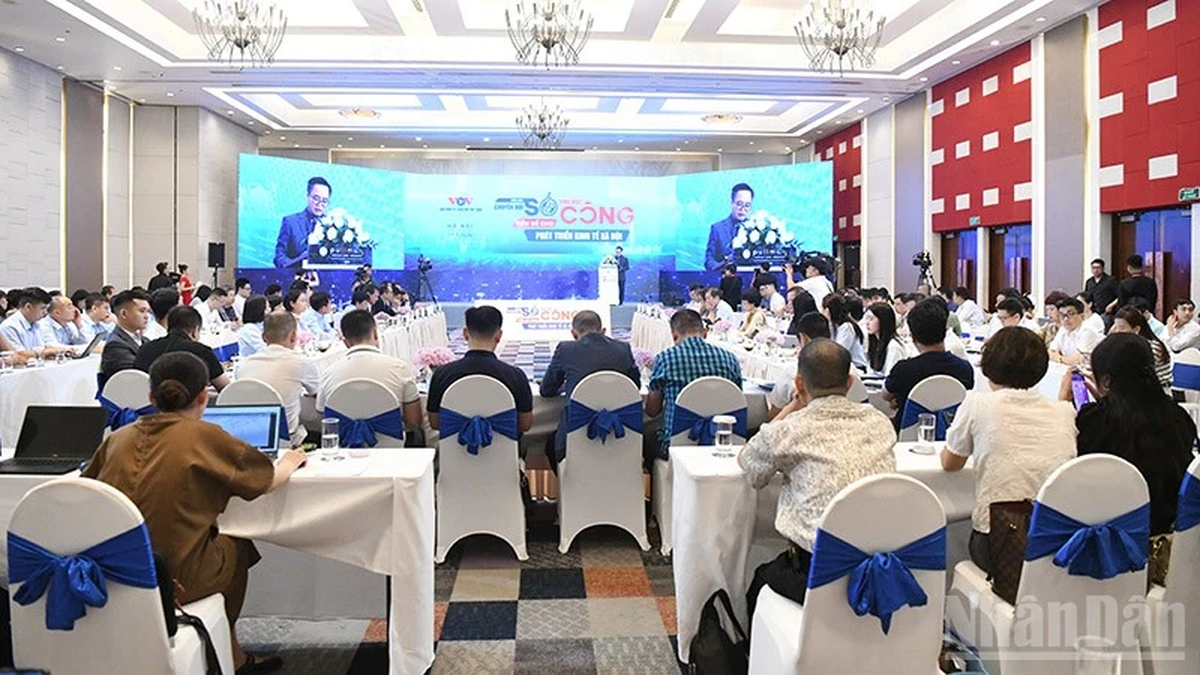According to the website of the International Market Research Corporation (IMARC) on December 1, Vietnam has the potential to become an e-commerce powerhouse in Southeast Asia, as this industry is experiencing strong growth and contributing to promoting national economic transformation.

According to a recent study by IMARC, the global e-commerce market is estimated to be worth 26.8 trillion USD in 2024 and is expected to reach 214.5 trillion USD by 2033. From established giants in the US and Europe to fast-growing markets in Asia, the e-commerce revolution is creating a competitive market that transcends geographical boundaries.
With favorable regulatory conditions, expanding foreign investment and improved internet access, Vietnam’s e-commerce ecosystem is poised for sustained growth, transforming the country into a regional powerhouse in the digital economy. E-commerce accounts for more than 60% of Vietnam’s digital economy, while a significant portion of the remaining 40% is made up of ride-hailing services and online media. In addition, Vietnam’s digital economy is estimated to reach US$220 billion by 2030, creating many opportunities for global investors. Forecasts suggest that Ho Chi Minh City and Hanoi will develop into important hubs.
Vietnam will lead the e-commerce revolution in Southeast Asia, as it is recognized as having one of the most favorable legal environments for e-commerce in the Association of Southeast Asian Nations (ASEAN). According to a survey by Facebook and Bain & Company, by 2026, Vietnam is forecast to surpass other Southeast Asian countries and become the fastest growing e-commerce market in the region.
The Vietnamese government is promoting a cashless environment to limit cash transactions to less than 10% of total payments. The Vietnamese government has also approved a national e-commerce growth master plan in line with the Fourth Industrial Revolution strategies, aiming to establish a digital economy to promote national digital transformation.
According to the International Monetary Fund (IMF), Vietnam is forecast to rank third in Southeast Asia in terms of Gross Domestic Product (GDP) by 2025 with US$571.12 billion, after Indonesia ($1,630 billion) and Thailand ($632.45 billion). In addition, the Vietnamese economy is expected to surpass the Thai economy after 2028. This trend is expected to significantly boost the growth of Vietnam's e-commerce industry by increasing consumer purchasing power, attracting greater foreign investment, and strengthening the country's position as a leading digital economy in the region.
According to IMARC estimates, Vietnam’s e-commerce industry is expected to grow at a compound annual growth rate of 28% from 2025 to 2033. The country’s growing e-commerce landscape is characterized by successful homegrown platforms including Tiki, Sendo, and Thegioididong, thanks to investments from Japan, the US, Germany, China, South Korea, and Singapore.
Singapore, as a regional economic hub, is closely connected to Vietnam’s e-commerce market through companies such as Shopee and Carousell. Singapore-based investors including Temasek, GIC and others have funded Vietnamese e-commerce startups.
South Korea, with its strong technological capabilities and growing interest in Southeast Asia, is increasingly targeting Vietnam’s e-commerce sector. South Korean e-commerce platform Coupang (dubbed the “Amazon of Korea”) is exploring the possibility of entering Vietnam, tapping its expertise in logistics and technology solutions. In addition, South Korean conglomerates such as Samsung and LG are investing in e-commerce infrastructure to promote their electronic products in Vietnam.
There are seven factors that have helped Vietnam attract the world's attention. First is its high growth potential, thanks to factors including a young and tech-savvy population, favorable government policies, rising foreign direct investment, and a strong export-oriented economy; Second is its favorable investment environment. The Vietnamese government has implemented various reforms, such as easing foreign investment regulations, tax incentives, reducing tax rates, flexible labor policies, improving labor relations, supporting public-private partnerships, and other policies to create a business-friendly environment; Third is Vietnam's strategic location as a gateway to other Southeast Asian markets. Fourth is its economic stability and expanding middle class. Fifth is the government's support for digital transformation. Next, Vietnam’s participation in free trade agreements such as the Comprehensive and Progressive Agreement for Trans-Pacific Partnership (CPTPP) and the Regional Comprehensive Economic Partnership (RCEP) has enhanced Vietnam’s role as a regional trade hub. Finally, the country has a young and skilled workforce that is tech-savvy and adaptable to the demands of the e-commerce industry.
Source




































































































Comment (0)